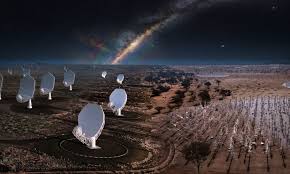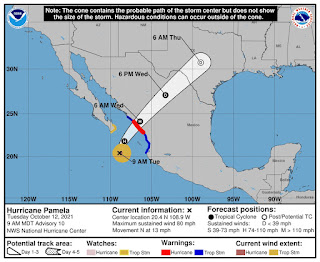Good morning. An unvaccinated child is at less risk of serious Covid illness than a vaccinated 70-year-old.
That statement was based on an article by Emily Oster, a Brown University economist, from an Atlantic article in March, which got angry reactions as being insensitive and misleading. The key point is that, sure, this kid will not get seriously ill...BUT COULD SPREAD THE VIRUS!!!
Oster was right about the risk factor:
The Leonhardt report went further to say:
Different elderly people will respond to the risks in different ways, and that’s OK. Some may decide to be extremely cautious until caseloads fall to low levels. Others — especially those without major health problems — may reasonably choose to travel, see friends and live their lives. The risks are not zero, but they are quite low. And few parts of life pose zero risk. |
As a point of comparison, the annual risk of death for all vaccinated people over 65 in Seattle this year appears to be around 1 in 2,700. The annual average risk that an American dies in a vehicle crash is lower — about 1 in 8,500 — but not a different order of magnitude. |
In other words, a vaccinated elderly person is more liable to die from COVID-19 than in a vehicle crash by factor of three.
Enrico Fermi was an architect of the atomic bomb, a father of radioactivity research, and a Nobel Prize–winning scientist who contributed to breakthroughs in quantum mechanics and theoretical physics. But in the popular imagination, his name is most commonly associated with one simple, three-word question, originally meant as a throwaway joke to amuse a group of scientists discussing UFOs at the Los Alamos lab in 1950: Where is everybody?
The point brought up was that there are 500 billion billion sunlike stars with 100 billion billion Earth-like planets out there. How can we be the only place that produced intelligent life?
Three options from that article:- Aliens don't exist, sort of supporting Fermi's wisecrack.
- Life is out there, but with no intelligence. It takes a lot of luck to evolve from bacterium to human. A corollary is that intelligence life formed elsewhere, but they don't long survive. We almost lost it during the Cold War.
- Intelligent Life is abundant, but quiet.
- Maybe it's wiser to be be silent, else we be conquered.
- Hinted is that aliens could well be digital, a future phase of our civilization.
- His idea was that all planets with an atmosphere lased, and sent out discrete wavelengths of light corresponding to the gas composition. These monochromatic signals could be tracked because means can be found to detect them, for the peak brightness of each particular gas might well exceed that of reflective starlight.
- Having this data, we thus would also know the gaseous composition of that exoplanet's atmosphere.
- Further, similar to the possibility of phosphine in the Venusian atmosphere, maybe other molecules might be found to further suggest biological life.
- If nothing else, just the composition might someday provide sufficient information to confirm life.
- Finally, if intelligent life actually thrived on that exoplanet, shifts in brightness and maybe even dimming might be another clue to an advanced civilization. Read this article on how Earth has changed to an observer far away because of climate change.
- Mega construction
- Astronomers long wondered why the star KIC 8462852 mysteriously dimmed and brightened. Was that a come here sign to other civilizations built by an advanced society...or cosmic dust?
- A large forest can be cultivated show an obvious sign.
- Laser pulses: repetitive pulses should mean something to an alien civilization that receives them.
- Robot probes: other civilization could have a long ago sent out small objects.
- Radio waves: this has been the standard of detection suggested by Philip Morrison and Giuseppe Cocconi in 1959 and developed in Project Cyclops and carried by the Allen Telescope Array around 300 miles north of San Francisco. Paul Allen of Microsoft provided $30 million, becoming operational in 2007 with 42 antennas
- Dyson Sphere: suggested by Freeman Dyson, an advanced society might want to be hidden, but has found a way to siphon energy from a nearby star, almost inadvertently throwing off waste heat that could be detected.
- Star Dance: astro-engineers could move stars, maybe to even attract attention.
- Needle in a haystack.
- Our Universe is 91 billion light-years across and can only communicate by targeting sites.
- There happens to be a zone in the sky with 100,000 stars that show promise.
- Space exploration.
- Yes, Star Trek and Star Wars.
- Some civilization might have found a way to travel long distances quickly with little energy used.
- Of course, they might not look human, and unless they previously seeded our origin, almost surely won't.
- Compared to any civilization, Humanity on Planet Earth would be a safe opportunity for anything out there.
- Various observatories are being utilized to view one million nearby stars and centers of 100 galaxies, searching for radio signals and laser transmissions.
- In one day, this program generates as much data as other SETI projects gather in a year.
- Ten times more sky, five times more radio spectrum at 100 times the speed.
- Was born in 1961 the year Frank Drake first convened a SETI conference, and is named after Yuri Gagarin.
- Will be 60 years old next month and lives in Silicon Valley.
- Was a particle physics in Moscow, but when the Soviet Union collapsed in 1990 he left to study business at the University of Pennsylvania.
- In 1999 founded an internet investment fund, was an early backer of Facebook, Twitter, Spotify and and Airbnb, and is now worth $3.8 billion.
- Founded in 2016 to send light sail intersteller nano probes named Starchips to Alpha Centauri, located 4.37 light years away, in less than 30 years. The return message would take more than four years.
- That $100 million will rise up to as much as $10 billion by the time of launching in 2036.
Ah, I can remove this from my desktop by inserting it here. This the size of our Moon:
Pamela became a hurricane today and will make landfall just north of Mazatlan tomorrow:
-






















Comments
Post a Comment